Diversity Collection
Spreadsheet
Maps
For certain spreadsheets you can display the content in a map. The content will be displayed with the GIS-Editor like in the example below.

To set the symbols etc. representing the values, click on the 
Transparency
For the creation of heat maps, the transparency of the symbols displayed
in the map can be set to a value below 255 (= no transparency).
Symbols
The symbols can be linked to the value within the database. A typical example would be the status of a plant, e.g. endagered, rare etc. stored as an analysis. Choose the Table where the values should be taken from. Now you can choose the column within the table. The different values will be listed and you can attribute a symbol together with the size to every listed value. In the image below, the symbols are linked to the values of a column named Last Nr for a certain analysis.

The tables in the drop down list (see above) correspond to the content
and definitions in the spreadsheets. Accordingly the values the symbols
are linked to are restricted to the current content of the spreadsheet.
As an alternative and in preparation for data containing other values to
get the whole range of possible values you can select the source for the
values from the whole database. Click on the 
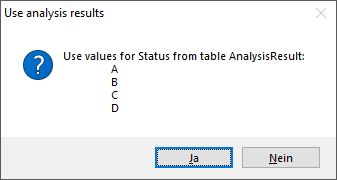
If the proposal does not fit, set the source manually: In the window that will open as shown below, choose the source table for the values and click OK. (The table names in this list correspond to those in the database)

This will open the source table as shown below. Here choose the column
for a filter, e.g. AnalysisID, select the type of comparision and enter
the restriction value. Now you can click on the 

Now all values from the source are listed, not only those contained in
the data form the spreadsheet (see below). The button



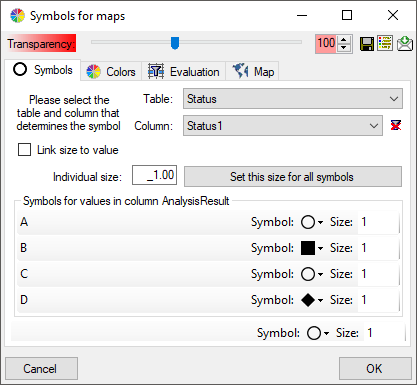
If the list does not contain a missing value, a separate control will appear at the end of the list, where you can set the symbol for missing values (see below).

The size of the symbols can be set either for every symbol or for all
symbols with the button Set this size for all
symbols. Another option is to link the size of the symbols to a
numeric value within the data (see below). Choose the table and the
column within this table containing the numeric value.
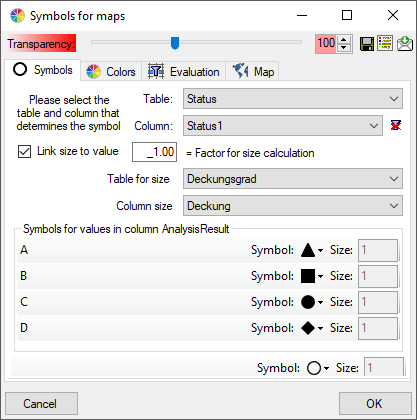
Colors
The colors can be linked to numeric values within the database. Select
the table and the column where the values should be taken from. Now
click on the 
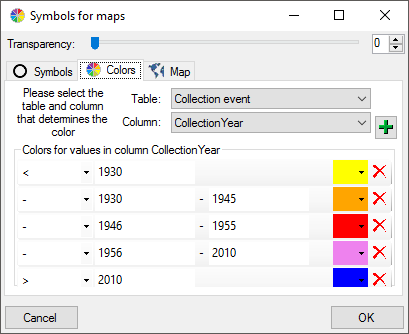
Legend
With a click on the  button, you can open a window
listing all symbols and colors with their attributed values (see below).
In the spreadsheet window, click on the
button, you can open a window
listing all symbols and colors with their attributed values (see below).
In the spreadsheet window, click on the  button
underneath the
button
underneath the 
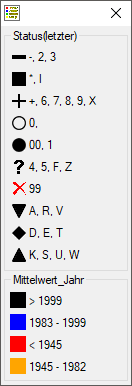
Evaluation
There are 3 types of maps available:
Map for WGS84 geography of organisms

Map with WGS84 coordinates

Map for objects aggregated according to TK25 quadrants







With the option 
Map
To display your data in a predefined 

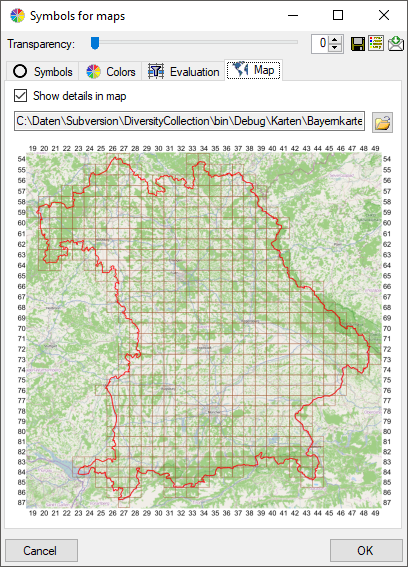
With the option 
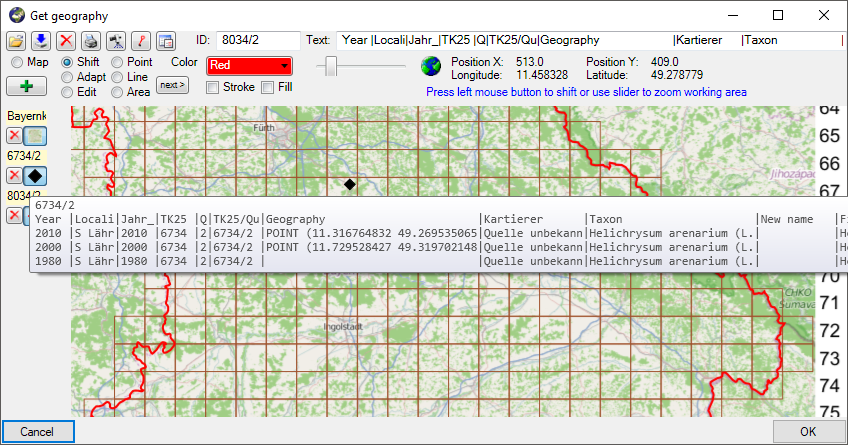
Maps for organism geography, WGS84 coordinates of the collection event and TK25
After the parameters for the map are set you can choose among 3 types of maps:
Map with WGS84 geography of the organisms

Map with WGS84 coordinates of the collection event

Map for objects aggregated according to TK25 quadrants

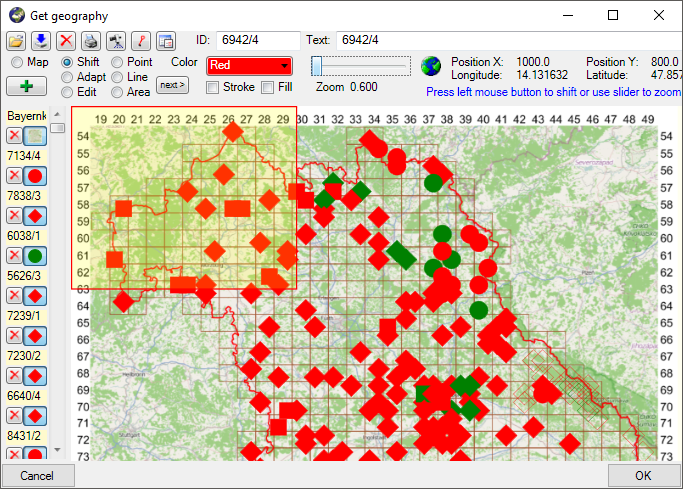
To select the data that should be edited either use the frame (as
described in GIS: Save samples and GIS:
Settings ) or select resp. deselect single data
with the mouse. Click OK to close the map and return to the spreadsheet
containing only the data selected in the map for further editing. For
the 

As only one symbol and color can be shown for every quadrant, a certain routine is used for the determination.
Color: For the color sortable values must be provided, e.g. the year or a period. The sorting will be according to the values were the highest value (e.g. the last year or period as determined by the user, see above) is preferred.
Symbol: For the symbol the sorting is determined by the user (see above).
The default routine for the determination:
- Reduce the values for the quadrant to the first digit e.g. 2413 will be reduced to 2
- Test every data row in the table that corresponds to the filter value
(e.g. TK25 + Quadrant as determined by the user, see above).
- The geography can not be determined - ignore this row. (The geography is determided via a gazetteer, see above)
- The value for the color is missing - ignore this row.
- The value for the color found in the data row is higher than the
value found so far
- Use this row to determine the color
- The value for the color in the data row is higher than the
color value associated with the symbol found so far
- Use this row to determine the symbol
- The row contains NO value for the symbol and the option
" Keep last valid symbol if later data
are missing" is NOT selected
- Use the symbol for missing values (determined by the user, see above)
- The row contains NO value for the symbol and the option
" Keep last valid symbol if later data
are missing" is NOT selected
- Use this row to determine the symbol
- The value for the color in the data row is equal to the color
value associated with the symbol found so far
- The value for the symbol in the row is above the value found so
far
- Use this row to determine the symbol
- The value for the symbol in the row is above the value found so
far
- No value for a symbol is found
- Use the symbol for missing values (determined by the user, see above)
